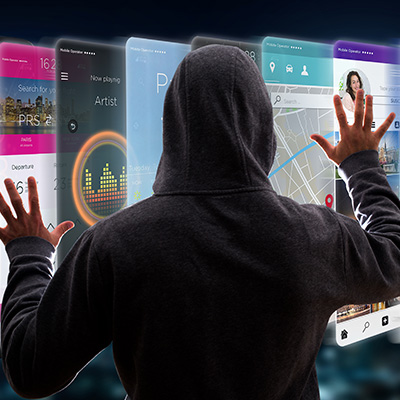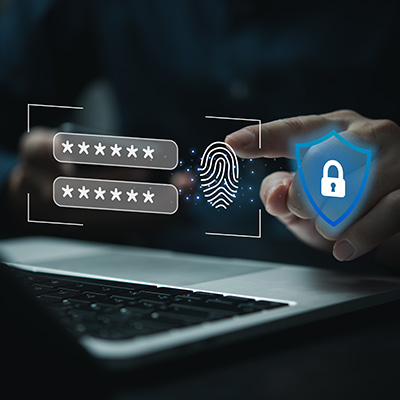Back in July, the White House secured commitments from Amazon, Anthropic, Google, Inflection, Meta, Microsoft, and OpenAI to help manage the risks that artificial intelligence potentially poses. More recently, eight more companies—Adobe, Cohere, IBM, Nvidia, Palantir, Salesforce, Scale AI, and Stability—also pledged to maintain “the development of safe, secure, and trustworthy AI,” as a White House brief reported.
It’s an unfortunate fact that cybercriminals are motivated to attack places that contain large volumes of sensitive data, but typically lack the budget or in-house skills to sufficiently protect it. It’s even more unfortunate that this description directly applies to many schools and school systems. Let’s talk about what schools have to offer cybercriminals, and what they need to do as a result.
It’s borderline impossible to conduct any business online without seeing potential threats abound. It also doesn’t help that threats tend to disguise themselves to avoid being detected. Today, we want to share a social media threat that one of our employees discovered while going about their day, and we think even a cautious user could have been fooled by it.
The cloud is an amazing tool for just about any business, allowing for countless benefits that span endless possibilities. However, because it involves the Internet and hosting data in an online environment, there are security challenges that naturally come about as a result of utilizing it. Let’s consider some of the security mistakes that businesses can experience while using the cloud.
We have not been shy about expounding upon the benefits of the cloud for businesses, as these benefits are both considerable and accessible. That being said, not even the cloud is completely perfect, and there are security errors that can easily be made. Let’s go through these security errors to see if any sound familiar to your situation. Missing Access Controls and No Multi-Factor Authentication Here’s the thing: if your cloud resources are open to anyone, nothing in them can be considered secure. This is why proper access controls—ideally supported by multi-factor authentication—are so important to have. The data and processes that the cloud can help you support are valuable to your business. Frankly, they’re critical. Leaving them exposed thereby puts your business at risk. Implementing access controls to limit access to your cloud resources to only the team members that actively need them is therefore necessary—and this access should also require multi-factor authentication requirements (identify authentication measures that go beyond just the username and password combination) to be met before it is granted. You Have No Backups Today’s businesses have various options available to them, in terms of how they put the cloud to use. Many will elect to utilize public cloud resources that are maintained and managed by an external provider, many will host and maintain their own cloud infrastructure within their business, and many will use a hybrid model that incorporates both for different purposes. Regardless of the type of cloud you use, it is important that you don’t put all your eggs in one basket. Remember, the cloud is just another server that you are able to access remotely. What if something were to happen to the cloud infrastructure you were relying on? This is precisely why it is important that you have backups for all of your cloud data—especially for that which you use a private, self-hosted cloud to store. And while it is true that most reputable cloud providers will actively store your data in numerous physical locations as a form of protective redundancy, it is always best to get this in writing in case the worst winds up happening. Cloud Data is Left Unencrypted Of course, backups are just one element of keeping your data safe. Again, while most public cloud providers are relatively very secure, data leaks and theft are not unheard of. Furthermore, data needs to travel back and forth between the user’s endpoint device and the cloud infrastructure, giving an enterprising cybercriminal the chance to take a peek while said data is in transit. In this context, avoiding a breach will require you to keep your cloud data encrypted, which scrambles it to anyone who tries viewing it without the proper decryption key. This measure is actually required by many regulations that businesses of assorted kinds must abide by, including the Payment Card Industry Data Security Standard (PCI DSS) and the UK’s General Data Protection Regulation (GDPR), making noncompliance a direct detriment to your business in general. We Can Help You Ensure Your Use of the Cloud is Secure, While Remaining Beneficial to Your Business In fact, we can say the same for all of your business’ critical technology. Here to provide Greensboro with the best that the managed services model of technology support has to offer, we’re hoping to […]
For today’s business, there are very few threats that are as pervasive as cyberthreats. For this reason organizations that are willing to invest in their cybersecurity seem to have more control over their data and operations. With cyberthreats constantly evolving and becoming more sophisticated, it is crucial to equip ourselves with the right tools to protect our digital assets. In this week’s blog post, we will explore some of the most important cybersecurity tools that every individual and organization should consider implementing.
You might think that adding additional security measures can only benefit your business, and this is true in most circumstances, save one: security exhaustion. If you don’t make it easy for your employees to adhere to your security policies, then you could inadvertently be making them perform slower than usual and your solutions could be getting in the way of their work.
When it comes to security, it can be challenging to keep up with shifting best practices. For instance, the use of a virtual private network has long been a staple to secure remote operations, and any decent IT service provider would recommend its use. However, this advice is changing with the growth of zero-trust access protocols. Let’s compare these two security options to consider why this is. Defining Virtual Private Networking and Zero-Trust Access In order to properly compare these two security tools, it is important that we establish what each of them is meant to accomplish. Virtual Private Networking, or the use of a VPN, creates a protected connection between two network endpoints via encryption. Let’s say you were stuck in an airport during a layover, but you had your work laptop with you. By using the VPN, you could connect back to your business’ infrastructure in order to access the data you need, without your activity being visible to others who may be snooping on the airport’s wireless network. Zero-Trust Access is a strategy in and of itself that turns the principle of least privilege into an actionable approach, requiring comprehensive verification at each and every step of any business process. Fundamentally, the thesis of zero-trust is that everything and everyone is a threat until they are confirmed not to be—with this confirmation regularly verified throughout the user’s processes. These two methods take very different approaches to securing your business. With the VPN, the focus is on keeping threats out, without particularly restricting the activities of those who have been authenticated. Zero-trust access, on the other hand, provides access to only what an authenticated user requires to fulfill their responsibilities. What Does a VPN Do Compared to Zero-Trust Access? Let’s break down different aspects that you need to keep in mind in terms of what each option provides. Breach Containment Should a breach occur, a VPN may help prevent the attacker from accessing more than what the VPN itself was directing toward, whereas a properly-configured zero-trust implementation will limit the breach specifically to the device, service, or application. Cloud Support Generally speaking, a VPN is hosted on-premise, although cloud options do exist. Zero-trust is typically hosted in the cloud, meaning that it works well in cloud-hosted applications. Functionality This is the crux of our discussion. All a VPN does is create a secure means of accessing different networks. Comparatively, zero-trust access does the same, but also restricts access within these networks based on predetermined policies. Remote Support With remote work being more prevalent than it has been in the past, ensuring a means of accessing the workplace securely is a more pressing need. A VPN enables remote workers to do so, while a zero-trust network does the same, but does so on a more granular level. Security Strength While the VPN does a great job of protecting data while it is being sent between two separate networks, that protection stops once each network is reached. The zero-trust network provides excellent security at every point, for every resource. These comparisons make it pretty clear that both offer sincere benefits to a business’ security, and that both should have a welcome place in your business security infrastructure. That being said, it is also understandable why today’s security experts are predicting […]
You Can’t Flub Your Cybersecurity Awareness Cybersecurity is something that you can’t just ignore. It’s not going to ignore you—cybercriminals target the people who think they aren’t a target in the first place. Most businesses these days have at least some level of cybersecurity-based compliance regulations to meet and follow. Some can come from the state, some can come from the industry you are in, some apply based on the type of information you work with, and some can come directly from your business insurance provider. One of the biggest mistakes I see business owners and C-levels make is that they have overconfidence in their own cybersecurity. Most business owners are the least secure people I know (and I don’t mean that in an insulting way; CEOs and entrepreneurs, in general, are just wired to be efficient, and cybersecurity practices can feel like a big roadblock to efficiency.) Heck, I lose sleep at night when I suspect that the owner of a company we work with refuses to use multi-factor authentication, but I catch myself longing to turn that feature off because of the extra couple of seconds it adds to getting into an account every day. The point is, even as a leader, you can’t skimp on security. In fact, you should be the shining example of it in your organization. You Have to Know If You Are Compliant or Not Depending on the regulations your organization needs to meet, you likely have a laundry list of tasks to check off quarterly or yearly. For many organizations, a part of that might include a regular penetration test. A penetration test is a very specific set of tasks that involve an ethical hacker attempting to break into your business network using a variety of different ways. There are multiple phases that include reconnaissance, scanning for vulnerabilities and other weaknesses, getting in and attempting to steal, change or delete data, staying within the network undetected for a period of time, and looking for non-technical ways to exploit your organization, such as social engineering. It’s not a small feat, and it’s far from the typical quick network audit or port sniffer scan and things that a technician might do to solve a problem or investigate an issue. Don’t confuse the small stuff with a penetration test. I’ve talked to business owners in the past who were convinced their network was secure because a third-party ran some network audit tools that came back with devices that were out of date and fixed them. While that’s important to do, and something we do regularly, and maintain for our clients, it’s a long way from an actual penetration test. Let’s Make Sense of Your Cybersecurity, Together Protecting your business from modern-day threats and meeting regulatory requirements is a challenge if you try to do it by yourself. Let GeekBox IT be your trusted IT partner and keep your business operating smoothly. Get started today by calling (336) 790-1000.
Viruses and malware are bad. Ransomware is crippling. Data breaches in some cases can more or less shut down a business. We talk about these threats all the time, but for most people, they are just scary-sounding buzzwords. Today, we want to talk about the more personalized threats that are much more cunning, and in some ways, much more dangerous.










